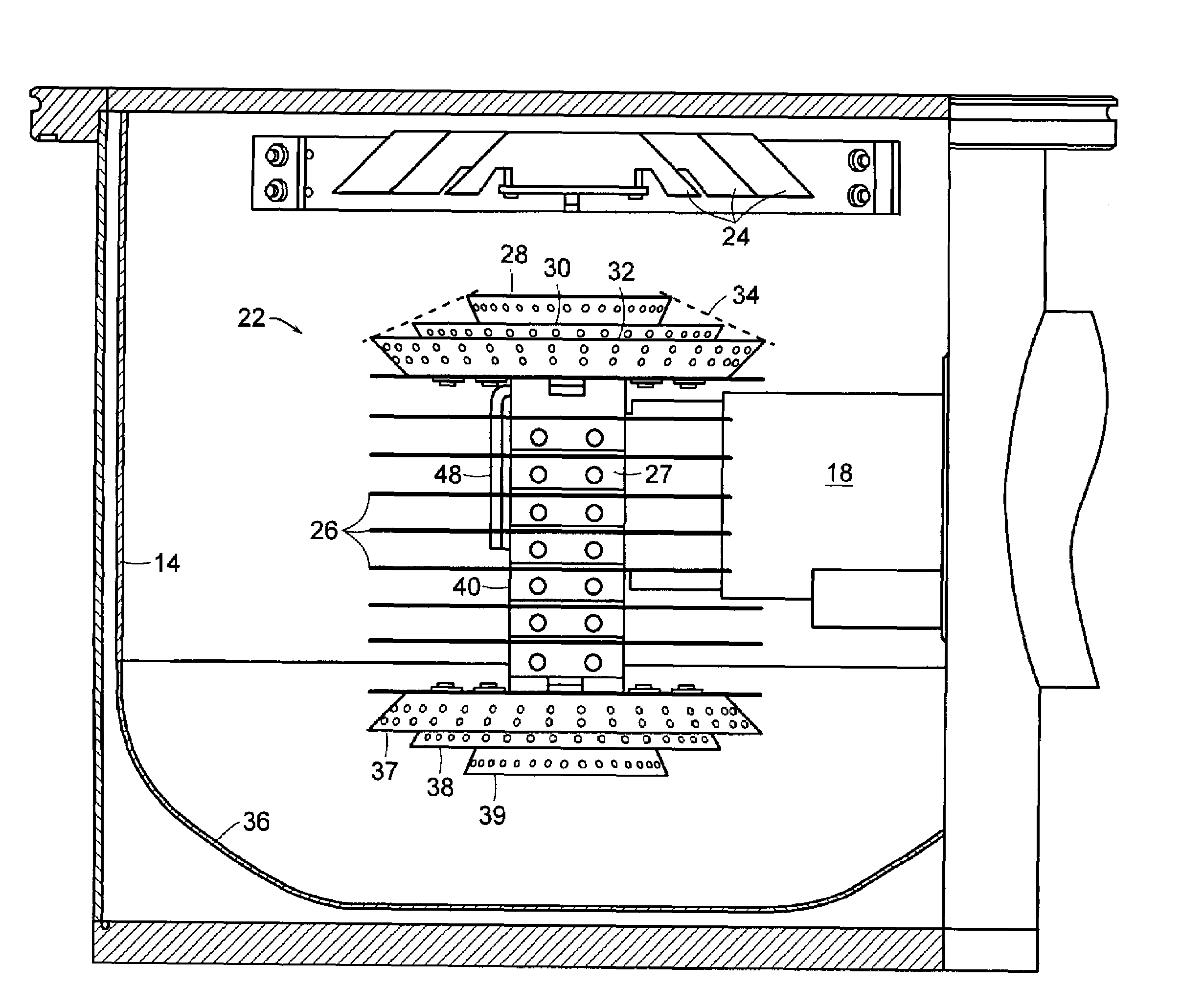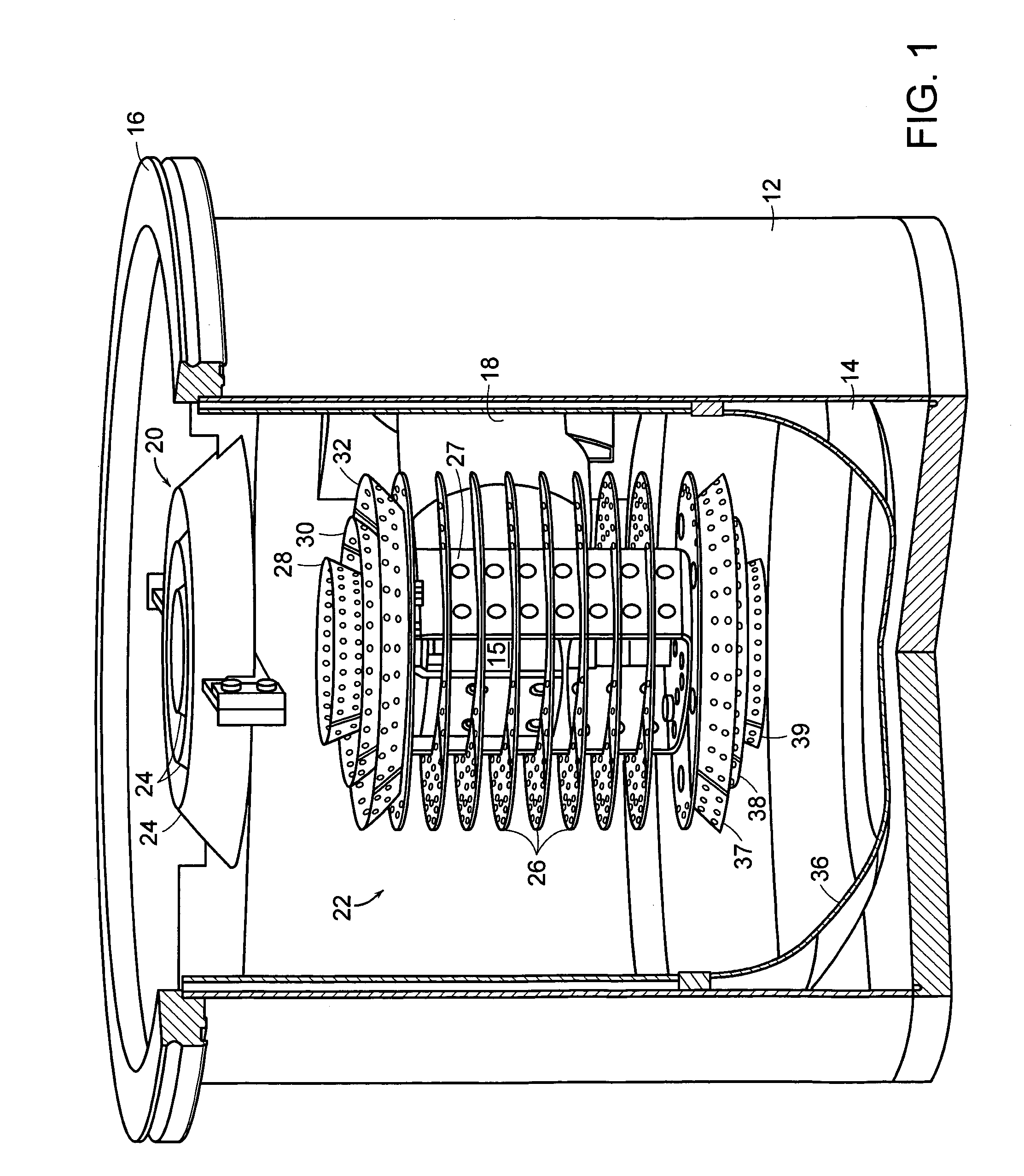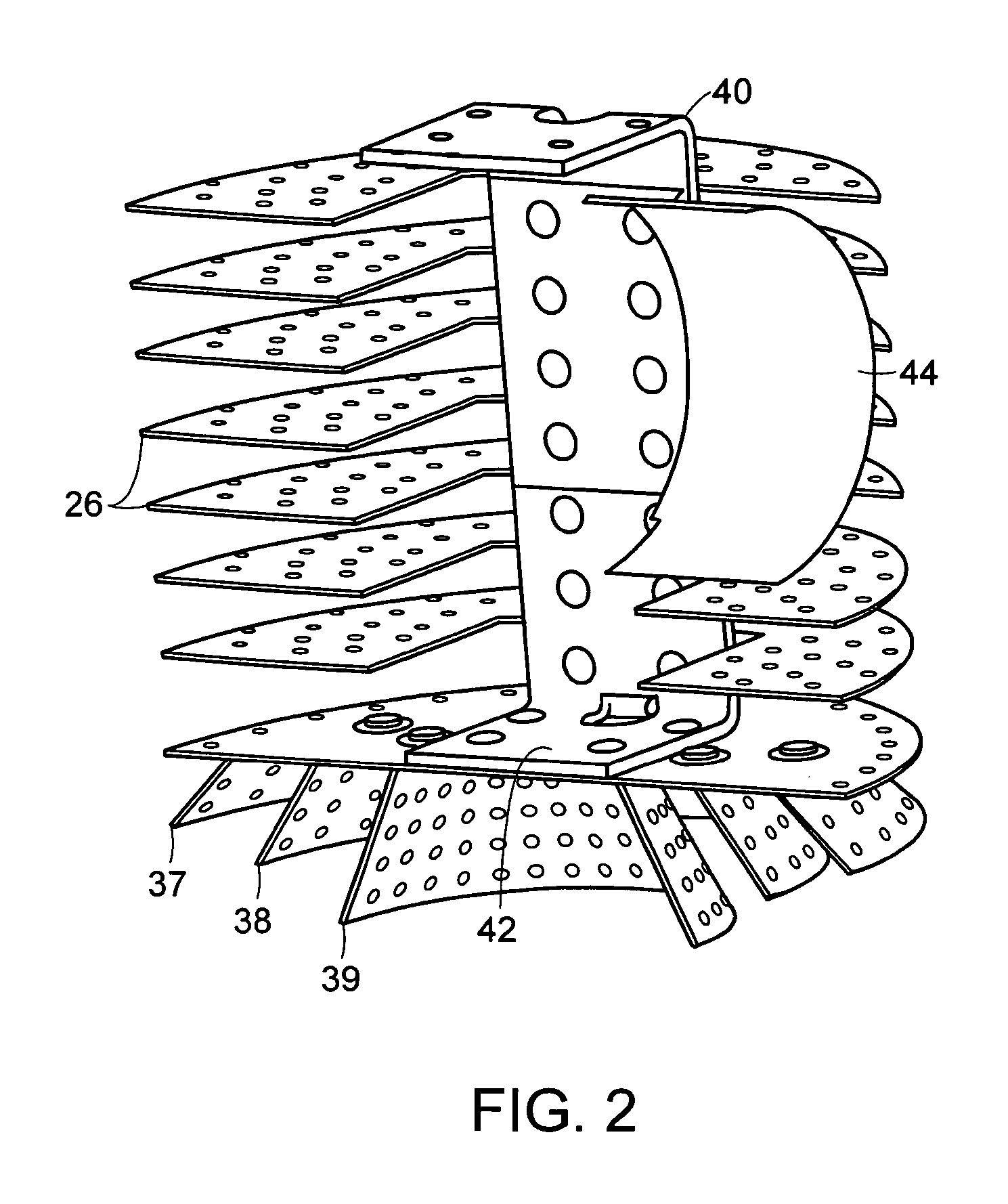High conductance cryopump for type III gas pumping
a cryopump and high conductance technology, which is applied in the direction of positive displacement liquid engines, separation processes, lighting and heating apparatus, etc., can solve the problems of reducing the accessibility of non-condensables to the adsorbent, and achieve the effect of high conductance, rapid collection of type iii gases, and improved conductan
- Summary
- Abstract
- Description
- Claims
- Application Information
AI Technical Summary
Benefits of technology
Problems solved by technology
Method used
Image
Examples
first embodiment
[0040]FIGS. 6-10 illustrate another embodiment of the invention. In this embodiment, the radiation shield 14 and frontal cryopanel 20 are similar to those found in the Similarly, the second stage cryopanel has an open design in which flat baffles are covered with adsorbent which is exposed to direct line of sight from the surrounding radiation shield or frontal opening. This embodiment, however, allows for fewer baffle parts and increased surface area. In this embodiment, the array is formed of discs which are fanned to define a generally ball shaped array. This design also relies on two baffle assemblies, one of which is illustrated in FIG. 7. The semi-circular discs are mounted to a bracket 62 having a vertical section 64 and incrementally sloping sections at either end. Four discs 66 are mounted to the vertical portion of the bracket and are thus horizontal. Three discs at each end of the bracket are angled outwardly and toward a respective end of the radiation shield. A final d...
second embodiment
[0042]A typical prior art cryopump having a 400 mm diameter has a capture rate at 72° F. of about 12,000 liters per second for hydrogen and a capture probability of hydrogen of about 22%. In an implementation of the first disclosed embodiment, a 320 mm diameter system, that is one having about two-thirds the opening area of the 400 mm system, has a capture rate of about 11,000 liters per second and a capture probability of about 31%. An implementation of the second disclosed embodiment having a 320 mm diameter obtains a capture rate of about 13,000 liters per second and a capture probability of about 37%. As another comparison, a conventional 250 mm system has a capture rate of about 4,500 liters per second with about 21% capture probability of hydrogen. A 250 mm system according to the invention obtained a 7,000 liter per second capture rate with about 32% capture probability of hydrogen.
PUM
| Property | Measurement | Unit |
|---|---|---|
| diameter | aaaaa | aaaaa |
| diameter | aaaaa | aaaaa |
| diameter | aaaaa | aaaaa |
Abstract
Description
Claims
Application Information
 Login to View More
Login to View More - R&D
- Intellectual Property
- Life Sciences
- Materials
- Tech Scout
- Unparalleled Data Quality
- Higher Quality Content
- 60% Fewer Hallucinations
Browse by: Latest US Patents, China's latest patents, Technical Efficacy Thesaurus, Application Domain, Technology Topic, Popular Technical Reports.
© 2025 PatSnap. All rights reserved.Legal|Privacy policy|Modern Slavery Act Transparency Statement|Sitemap|About US| Contact US: help@patsnap.com



